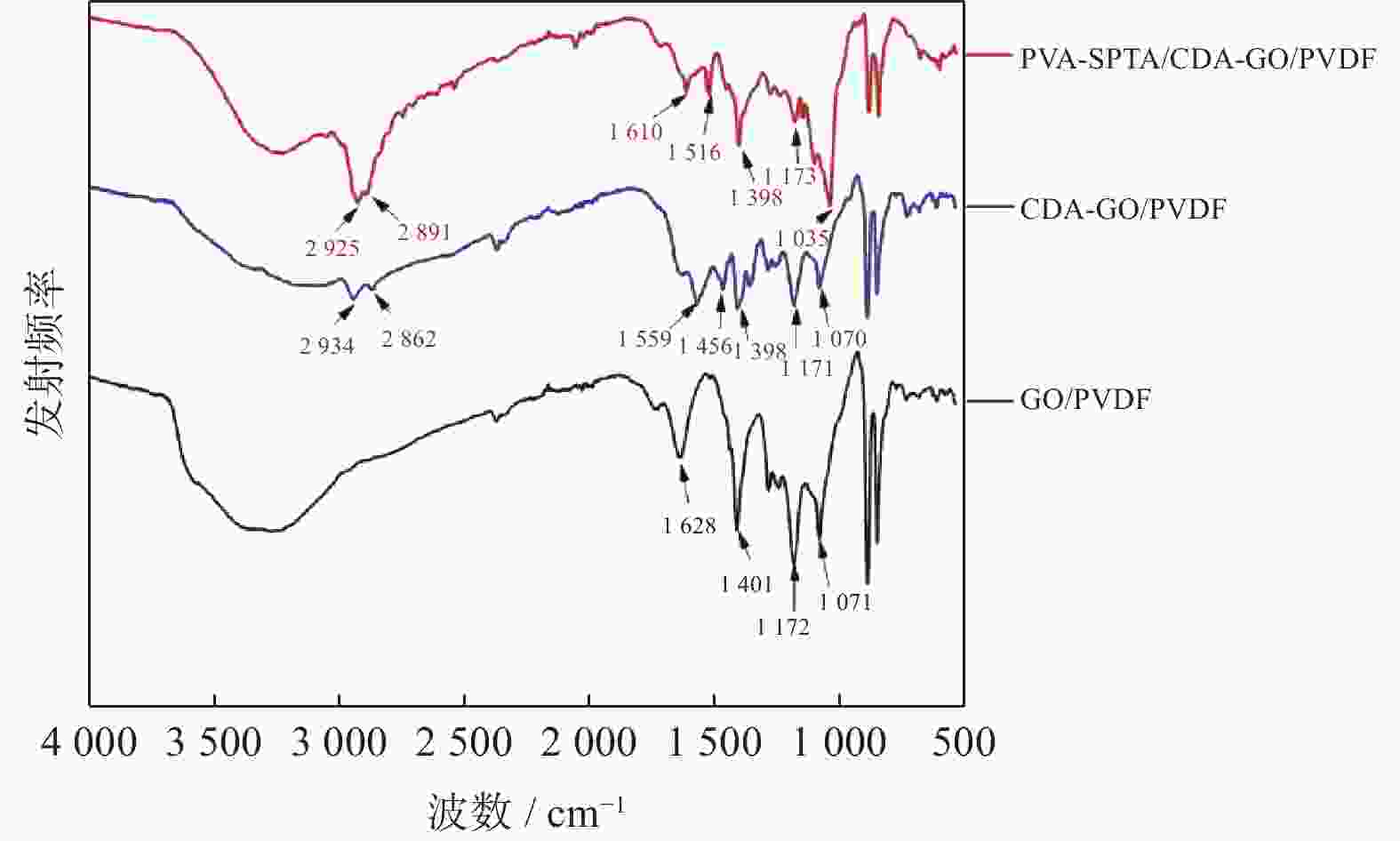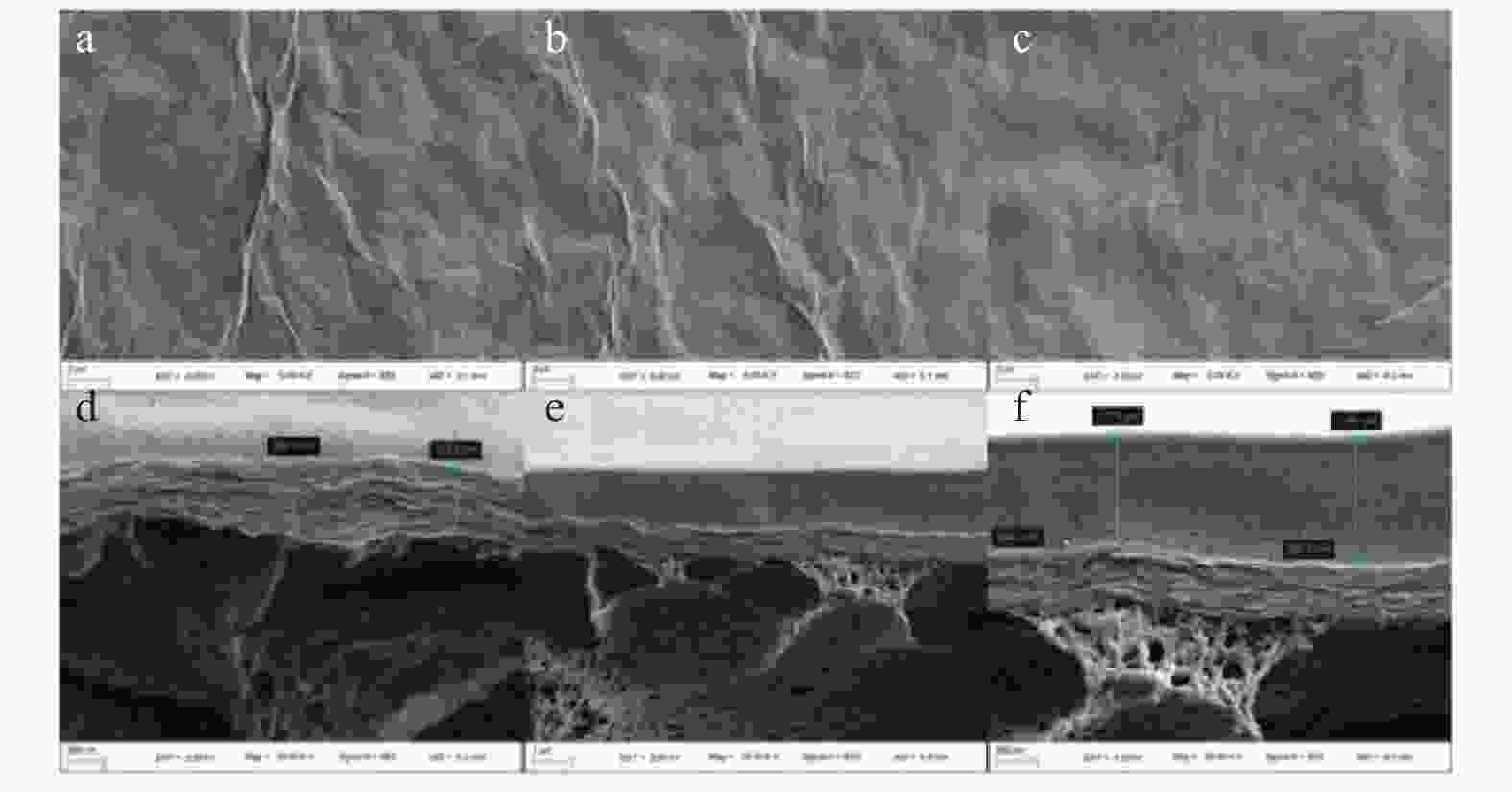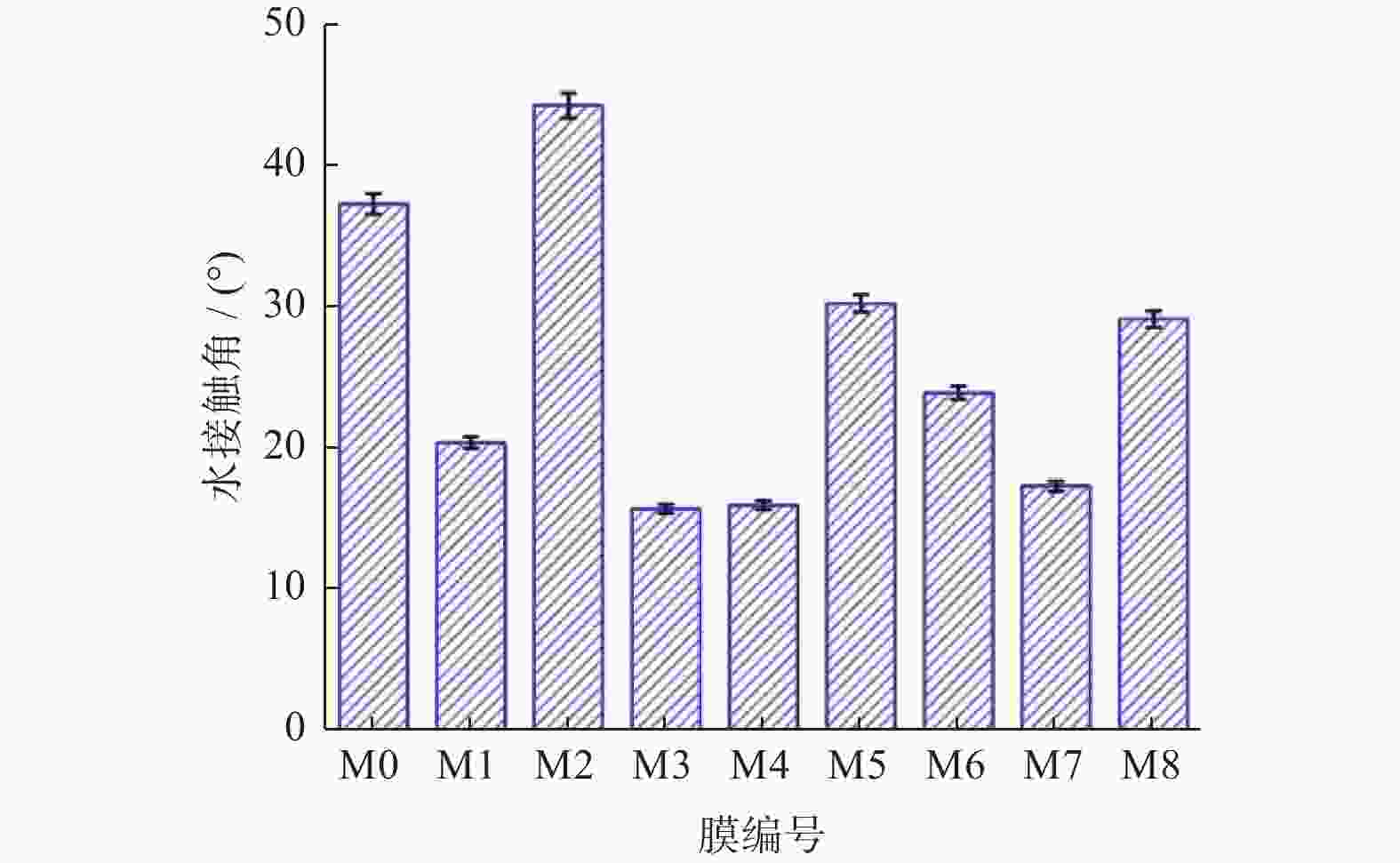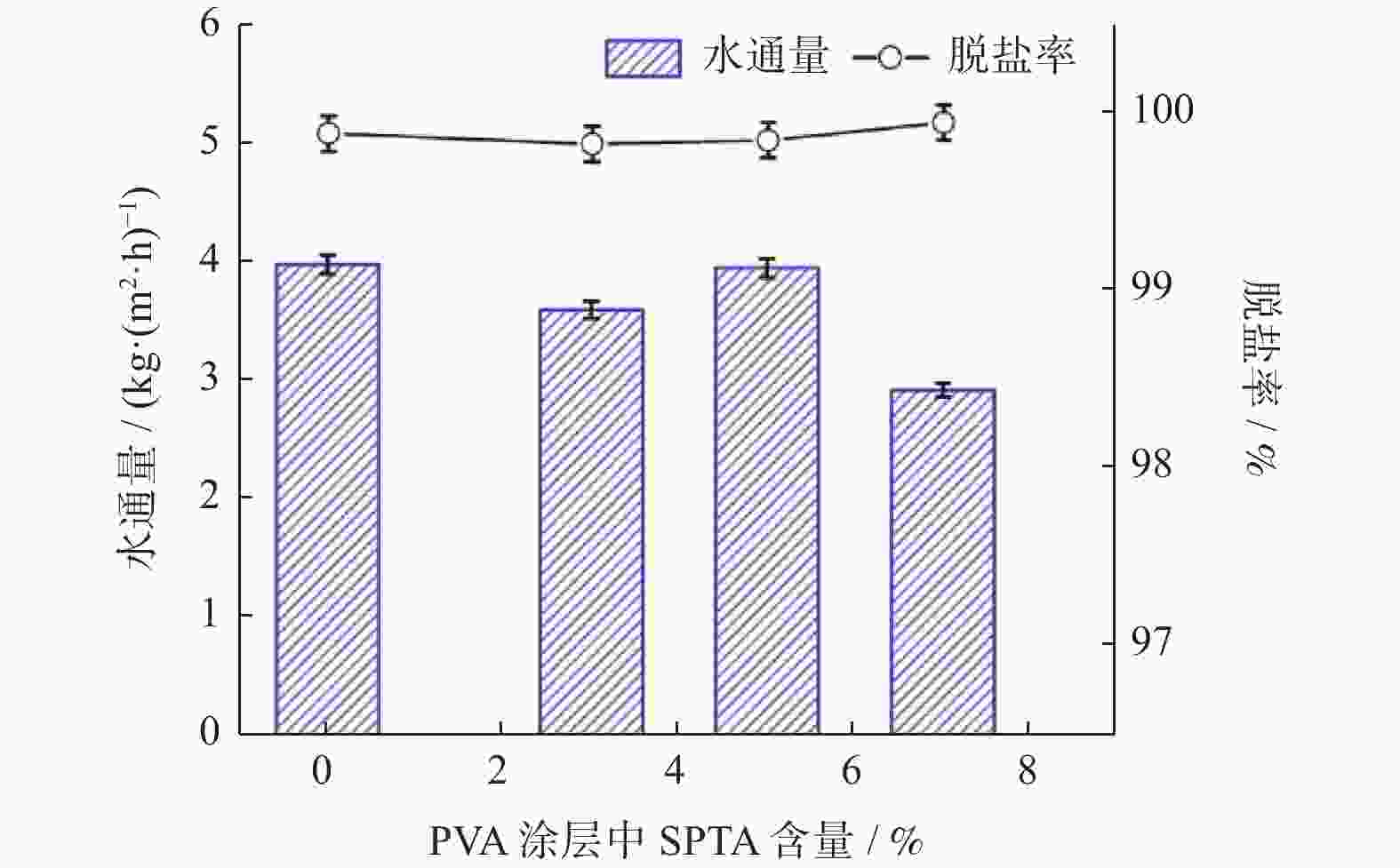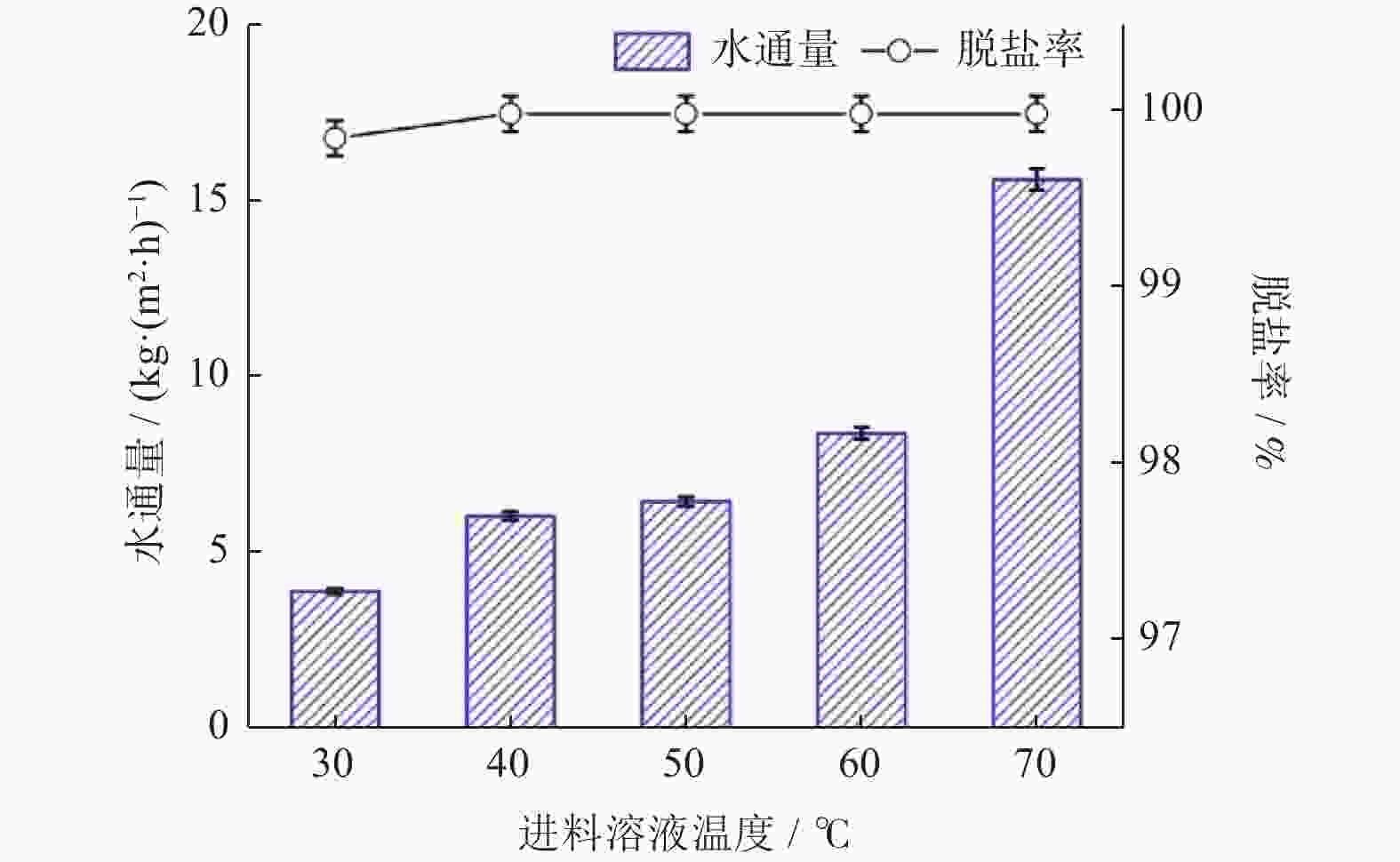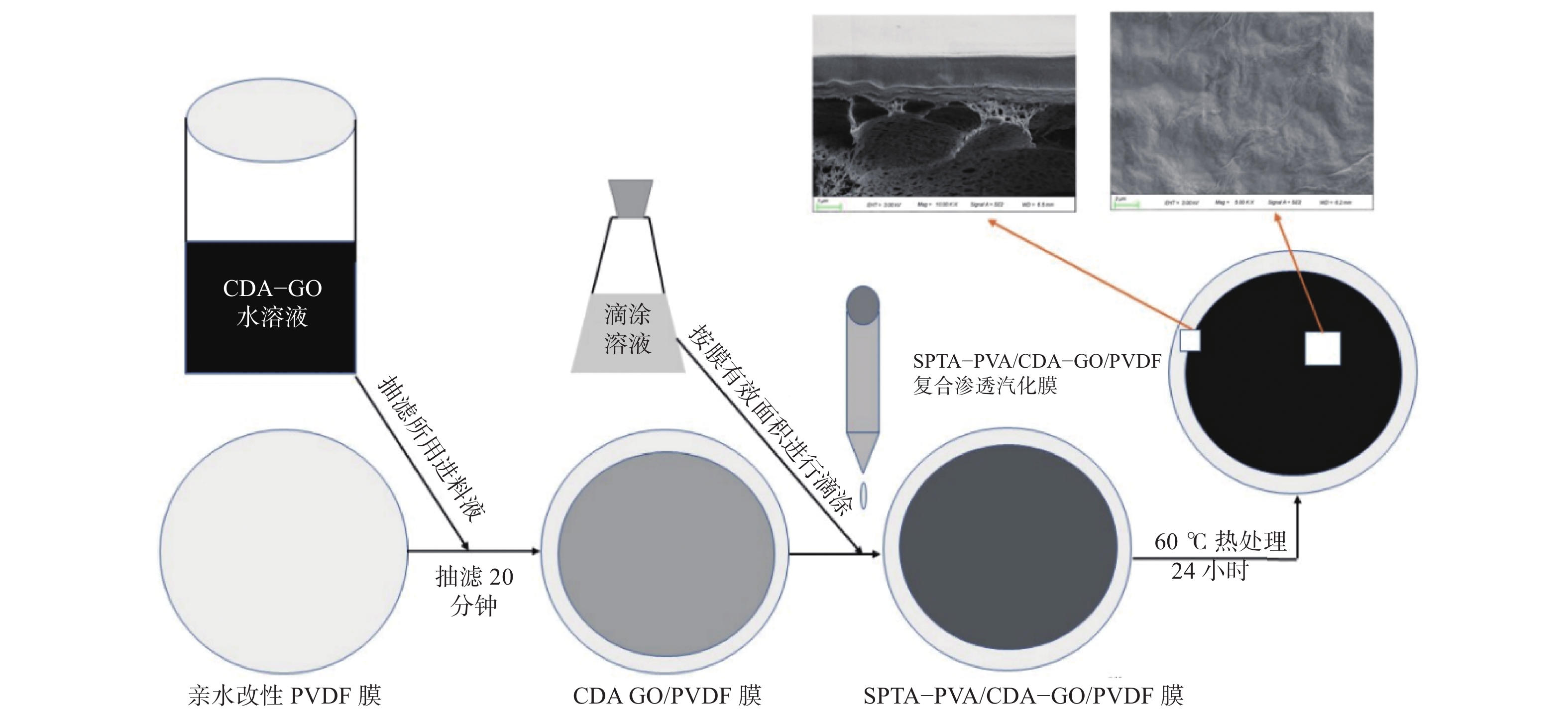Preparation and characterization of SPTA−PVA/CDA−GO/PVDF composite membrane
-
摘要:
用1,4−环己二胺(CDA)修饰氧化石墨烯(GO),利用4−磺基邻苯二甲酸(SPTA)对聚乙烯醇(PVA)进行交联,以亲水化的聚偏氟乙烯(PVDF)超滤膜为底膜,通过真空过滤与滴涂,制备SPTA−PVA/CDA−GO/PVDF复合膜. 采用全反射傅里叶变换红外光谱(ATR−FTIR)、扫描电子显微镜(SEM)和接触角测试对复合膜表征,并测试复合膜的渗透汽化脱盐性能. 结果表明,CDA修饰扩大了GO纳米片的层间距,增加了CDA−GO层的透水性;交联PVA层提高了复合膜的表面亲水性和稳定性,增强了复合膜吸水性和水传输性能. 复合膜在70 ℃对质量分数为3.5%的氯化钠(NaCl)水溶液获得15.6 kg/(m2•h)的水通量和99.99%的脱盐率.
Abstract:Graphene oxide (GO) was modified by 1,4−cyclohexanediamine (CDA), and polyvinyl alcohol (PVA) was crosslinked by 4−sulfophthalic acid (SPTA). Hydrophilized polyvinylidene fluoride (PVDF) ultrafiltration membrane as support, SPTA−PVA/CDA−GO/PVDF composite membrane was prepared through vacuum filtration and drop coating. The composite membrane was characterized by ATR−FTIR, SEM and contact angle, and the pervaporation desalination performance of composite membrane was tested. The results show that the modification of CDA extended the interlayer spacing of GO nanosheets, thus improving the water permeability of CDA−GO layer, and the crosslinked PVA layer enhanced the surface hydrophilicity and stability of composite membrane, consequently, improved the water absorption and water transport properties of composite membrane. The composite membrane obtained a flux of 15.6 kg/(m2•h) and a rejection of 99.99% when treating with concentration of 3.5% NaCl solution at 70 ℃.
-
Key words:
- pervaporation /
- desalination /
- graphene oxide /
- polyvinyl alcohol
-
表 1 膜编号及对应膜的组成
Table 1. Membrane number and composition of corresponding membrane
膜编号 c(GO)/(mg•mL−1) c(CDA)/(mol•L−1) ωPVA/% ωSPTA/% M0 0.1 — — — M1 0.1 — 0.25 5 M2 0.1 0.05 — — M3 0.1 0.025 0.25 5 M4 0.1 0.1 0.25 5 M5 0.1 0.05 0.25 0 M6 0.1 0.05 0.25 3 M7 0.1 0.05 0.25 5 M8 0.1 0.05 0.25 7 -
[1] SHANNON M A, BOHN P W, ELIMELECH M, et al. Science and technology for water purification in the coming decades[J] . Nature,2008,452:301 − 310. doi: 10.1038/nature06599 [2] ELIMELECH M, PHILLIP W A. The future of seawater desalination: Energy, technology, and the environment[J] . Science,2011,333:712 − 717. doi: 10.1126/science.1200488 [3] 王华, 刘艳飞, 彭东明, 等. 膜分离技术的研究进展及应用展望[J] . 应用化工,2013,42(3):532 − 534. [4] SALEEM H, ZAIDI S J. Nanoparticles in reverse osmosis membranes for desalination: A state of the art review[J] . Desalination,2020,475:114171. doi: 10.1016/j.desal.2019.114171 [5] ZHAO P B, MENG J Q, ZHANG R, et al. Molecular design of chlorine-resistant polymer for pervaporation desalination[J] . Separation and Purification Technology,2021,268:11867. [6] CHEN X, ZHU Y B, LIU J Z, et al. Ultrafast water evaporation through graphene membranes with subnanometer pores for desalination[J] . Journal of Membrane Science,2021,621:118934. doi: 10.1016/j.memsci.2020.118934 [7] BOLTO B, TRAN T, HOANG M, et al. Crosslinked poly (vinyl alcohol) membranes[J] . Progress in Polymer Science,2009,34:969 − 981. doi: 10.1016/j.progpolymsci.2009.05.003 [8] LIANG B, LI Q, CAO B, et al. Water permeance, permeability and desalination properties of the sulfonic acid functionalized composite pervaporation membranes[J] . Desalination,2018,433:132 − 140. doi: 10.1016/j.desal.2018.01.028 [9] ALKHOUZAAM A, QIBLAWEY H. Functional GO-based membranes for water treatment and desalination: Fabrication methods, performance and advantages. A review[J] . Chemosphere,2021,274:129853. doi: 10.1016/j.chemosphere.2021.129853 [10] LIANG B, ZHAN W, QI G G, et al. High performance graphene oxide/polyacrylonitrile composite pervaporation membranes for desalination applications[J] . Journal of Materials Chemistry A,2015,3(9):5140 − 5147. doi: 10.1039/C4TA06573E [11] LIN H, DANGWAL S, LIU R C, et al. Reduced wrinkling in GO membrane by grafting basal-plane groups for improved gas and liquid separations[J] . Journal of Membrane Science,2018,563:336 − 344. doi: 10.1016/j.memsci.2018.05.073 [12] QIAN Y L, ZHOU C, HUANG A S. Cross-linking modification with diamine monomers to enhance desalination performance of graphene oxide membranes[J] . Carbon,2018,136:28 − 37. doi: 10.1016/j.carbon.2018.04.062 [13] NIKKHAH S, TAHERMANSOURI H, CHEKIN F. Synthesis, characterization, and electrochemical properties of the modified graphene oxide with 4, 40-methylenedianiline[J] . Materials Letters,2018,211:323 − 327. [14] NIGIZ F U. Graphene oxide-sodium alginate membrane for seawater desalination through pervaporation[J] . Desalination,2020,485:114465. [15] ZHAO X Y, TONG Z Q, LIU X F, et al. Facile Preparation of polyamide−graphene oxide composite membranes for upgrading pervaporation desalination performances of hypersaline solutions[J] . Industrial & Engineering Chemistry Research,2020,59(26):12232 − 12238. [16] WANG Q Z, LI N, BOLTO B, et al. Desalination by pervaporation: A review[J] . Desalination,2016,387:46 − 60. doi: 10.1016/j.desal.2016.02.036 -






 下载:
下载:
